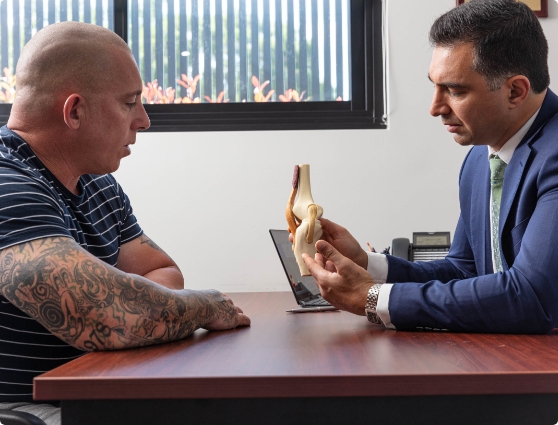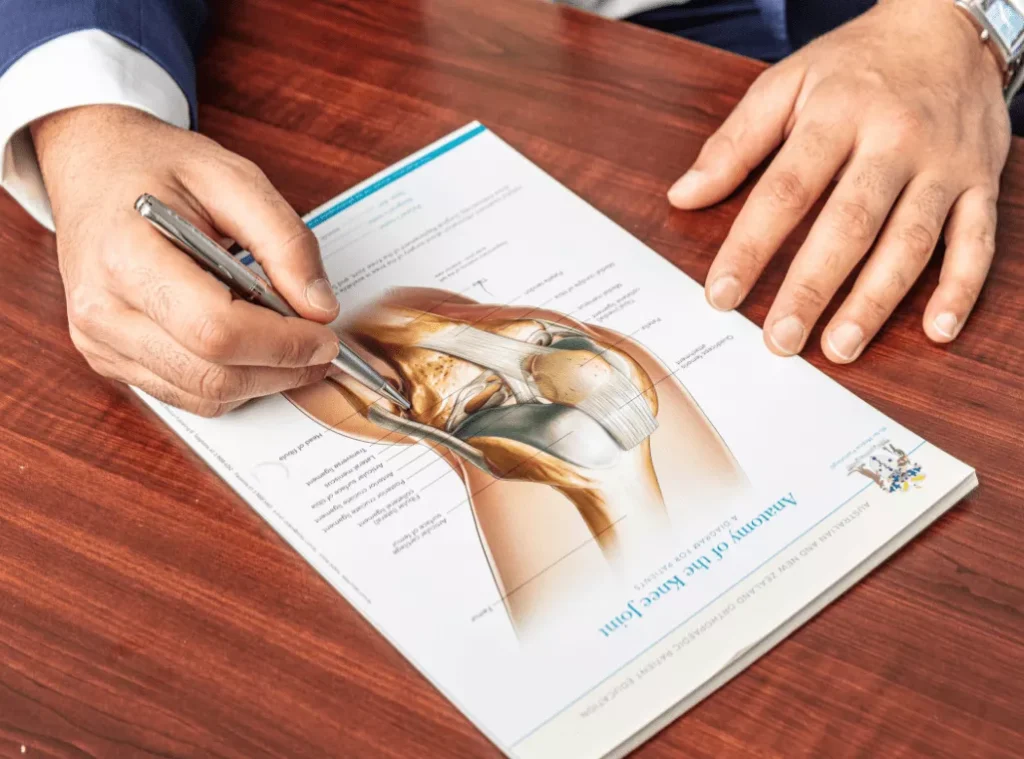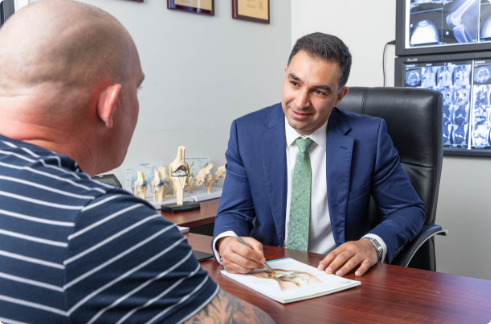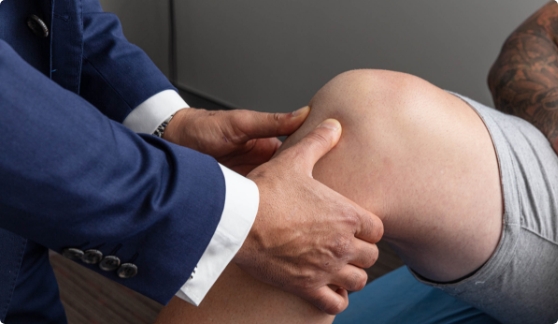Knee Ligament Injuries and Reconstruction Conditions
The knee joint is a large complex joint supported by four important ligaments that allow the knee to move through a large range of motion, while keeping the knee joint stable and allowing it to carry the weight of the body.
The Knee Structure
There are two ligaments on the side of the knee:
- Severe knee pain which limits your daily activities (such as walking, getting up from a chair or climbing stairs).
In addition, the knee has two cruciate ligaments:
- The anterior cruciate ligament (ACL) and the posterior cruciate ligament (PCL) which support the knee in the anterior-posterior plane and also support the knee during rotational movements e.g. pivoting on the knee.
The knee joint is a large complex joint supported by four important ligaments that allow the knee to move through a large range of motion, while keeping the knee joint stable and allowing it to carry the weight of the body.

The knee joint is a large complex joint supported by four important ligaments that allow the knee to move through a large range of motion, while keeping the knee joint stable and allowing it to carry the weight of the body.
Book an Appointment Today!
Impacts affecting the knee joint and common causes of injury

The knee joint bears large forces during daily activities and even more forces during strenuous activities such as work and athletic activities. These activities put extraordinary forces on the knee and may lead to injury to one or more of these ligaments. Therefore, knee ligament injuries are common.
Knee injuries can be limited to one ligament, such as common injuries to the ACL or MCL, which may also involve injuries to the meniscal structures e.g. ACL rupture with an associated meniscal injury. Single ligament injuries are very common; some can be managed with bracing and physiotherapy and others may require surgery. The management of the injury depends on the ligament injured and even the different type/grade or location of the rupture along the course of the injury. A more severe injury involves the rupture of multiple ligaments.
Some examples of ligament injuries are:
Medial Collateral Ligament (MCL) injuries
This is a broad ligament on the inside of the knee that attaches to the femur and the tibia. It is common for the femoral attachment to be injured, but this usually heals reasonably well with bracing and does not typically need surgery to repair it.
In contrast, MCL injury from the tibial end may require surgical repair, because the bone in this area is harder (cortical bone) and the some of the hamstring tendons attach to this area (Pes anserine) and these tendons may come between the torn ligament and the bone and prevent proper healing.
Lateral Collateral Ligament (LCL) injuries
In contrast to the MCL, this ligament is on the outside of the knee and is a cord like structure that runs between the fibula head and the femur. Because of its small foot print of attachments, significant tears (Grade 2 and Grade 3) are unlikely to heal properly with just bracing and ongoing instability may be an issue. Therefore, complete tears of this ligament are usually managed surgically with repair with or without augmentation of the repair with tendon reconstruction to reinforce the repair.
Studies have shown that because of the narrow cord like structure of the LCL, repairs alone may stretch and fail, therefore augmentation of the repair is commonly performed. Augmentation can use hamstring tendons or artificial augments such as LARS.

Posterior Cruciate Ligament (PCL) injuries
This ligament lies posterior to the ACL, is broader and has a bigger attachment to the tibia and femur. The PCL is also less commonly injured compared to the ACL. When injured, the PCL is less likely to cause knee instability, but some activities such as horse riding, skiing, and motorbike riding rely on knee stability in a flexed position and symptomatic instability may occur. Most PCL injuries are treated with bracing and physiotherapy, but in cases of persistent instability, surgery for PCL reconstruction may be required.
Anterior Cruciate Ligament (ACL) injuries
This ligament is the most commonly injured knee ligament and ACL reconstruction is a very common surgical procedure. Because of the importance of the ACL in maintaining knee stability and because ACL reconstruction surgery is so common, further information is available in a dedicated section of this website.

Posterolateral Ligament Complex (PLC) injuries
This is a group of smaller ligaments that contribute to knee stability. The posterolateral complex is usually injured in combination with other knee ligament injuries such as the PCL, ACL or LCL. Injury to the PLC may be an emergency as repair of these structures is easier to perform in the first 2 weeks after injury. Furthermore, the common peroneal nerve is closely associated with the PCL and an associated injury to this nerve may occur. Therefore, PLC injuries are best managed as an emergency requiring prompt orthopaedic assessment.
When you attend your consultation with Dr Khatib, he will discuss your injury and possible treatment plans with you in detail.
Call us on 02 4721 4434 to make an appointment.
